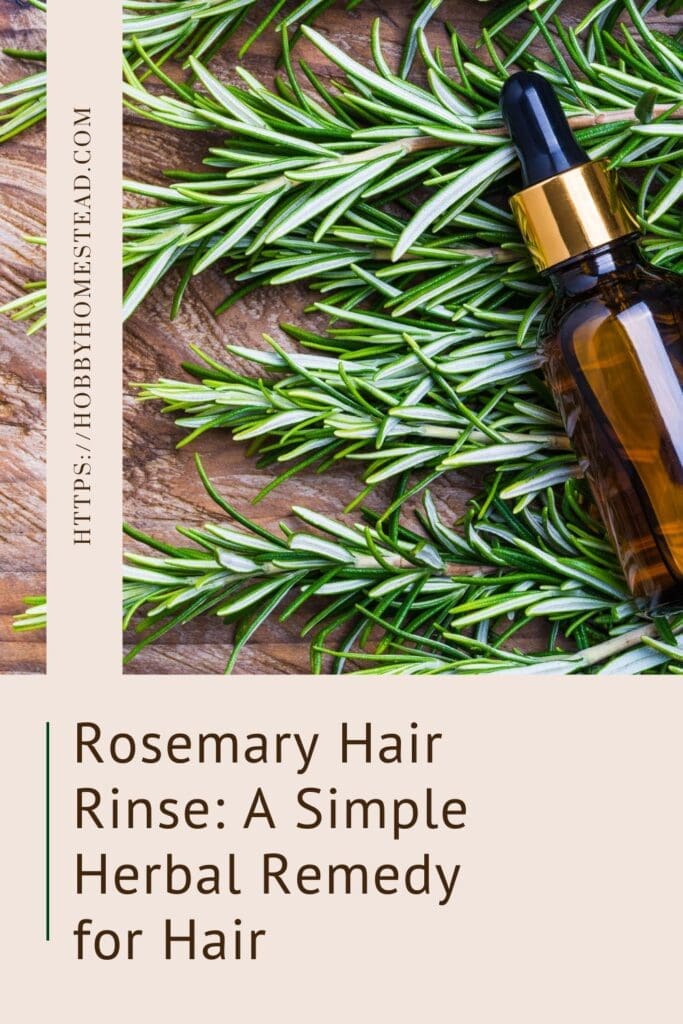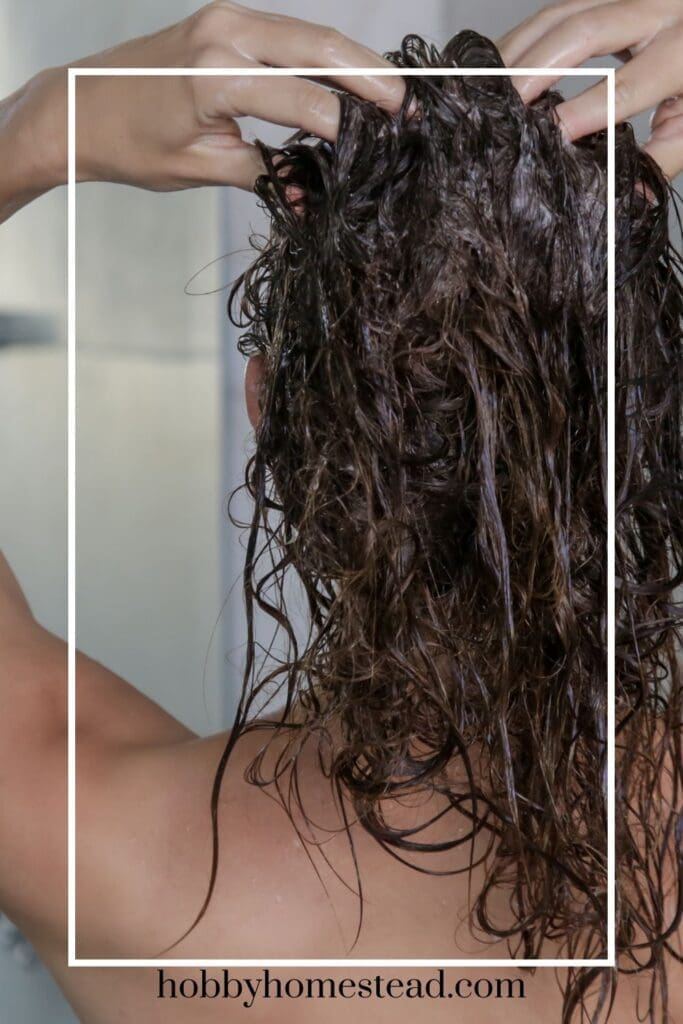If you’ve ever wished your hair felt shinier, stronger, or just a little less blah, a rosemary hair rinse might be exactly what your hair care routine needs. This natural remedy has been used for centuries, and it’s having a major moment on social media—for good reason.
According to Very Well Health, it hasn’t been studied scientifically for this purpose. However, there may be a connection between rosemary water trend and evidence that the plant may help with scalp health and hair growth stimulation. So, rosemary water may, indeed, be good for your hair.
I’ve Tried the Rosemary Water Rinse
I started making my own rosemary water as a weekend experiment, mostly because I had a bunch of fresh rosemary leaves growing wild in my herb garden. This little DIY might just become a regular part of my routine. The results? My hair seemed to have shinier strands and less of that itchy scalp feeling.
Let me walk you through how to make your own rosemary hair rinse, how to use it, and why this natural solution might just change your wash days forever.

Why Rosemary for Hair?
Rosemary—officially known as Rosmarinus officinalis—isn’t just for roasted potatoes. It’s packed with antimicrobial properties, ursolic acid, and antioxidants that help fight free radicals, which can damage your scalp and slow down healthy hair growth.
Studies and scientific research have linked rosemary oil and rosemary extracts to improved blood circulation in the scalp and even slowed hair loss from conditions like androgenetic alopecia. (Ezekwe N, King M, Hollinger JC, 2020).
Whether you’re dealing with dry scalp, oily hair, thinning, or just want to boost the shine of your hair, rosemary is one of the easiest, most affordable natural ingredients to try.
How to Make a Rosemary Hair Rinse
This is one of the easiest ways to whip up a DIY hair treatment using simple ingredients you probably already have in your kitchen.
All you need is:
- A handful of fresh sprigs of rosemary (or 1 tbsp of dried)
- 2–3 cups of water
- Optional: lavender flowers or a few drops of essential oil like lavender or peppermint for added scent
Bring the water to a boil, add the rosemary, then turn off the heat and let it steep like a rosemary tea for 30 minutes to an hour. You can even let it steep overnight for a stronger infusion.
Once it’s cool, strain it into a jar or spray bottle and store in the fridge. This is now your very own homemade rosemary water!
How to Use Rosemary Water on Your Hair
After your next hair wash, slowly pour the rinse over your scalp and hair as your final rinse. Gently massage it into your scalp to encourage blood flow to your hair follicles. Don’t rinse it out. Just let your hair soak in the goodness. Wrap it in a warm towel or let it air dry naturally.
If you’re more into quick spritzes, use a spray bottle to mist your scalp daily as a leave-in treatment. Especially helpful if you’re targeting hair thinning or boosting new hair growth.
You can also add a few tablespoons of the rinse to your natural shampoo bar or mix it with a splash of apple cider vinegar for a custom apple cider vinegar hair rinse. A bit of plain vinegar helps restore your hair’s pH and gives your scalp a refresh. Especially great for an oily scalp.

Best Hair Types for Rosemary Rinse
Honestly, it works for most hair types. It’s especially loved by those with dry hair, oily roots, or brittle ends.
Since rosemary helps stimulate new roots, it’s also a favorite for folks dealing with hair thinning or hair loss.
That said, everyone’s skin is different, so a patch test is always a good idea, especially if you have sensitive skin or any history of skin irritation.
My Favorite Tips for Best Results
I’ve found that consistent use is key. I saw the most noticeable changes around week three—less shedding in the shower, and my hair had that soft, silky feel even without fancy conditioners or personal care products full of harsh chemicals.
Store your rosemary rinse in the fridge and use within a week for best potency. If you’re short on time, steep your fresh rosemary leaves in hot fresh water during your shower and use it warm—super relaxing, especially in the winter months.

Add a Little Extra: Carrier Oils & More
You can totally turn this into a more nourishing hair treatment by adding a few drops of rosemary oil to a carrier like coconut oil or olive oil.
Massage it into your scalp before shampooing. For extra conditioning benefits, mix rosemary rinse with aloe vera gel or use after applying a natural product like a deep conditioner or sugar notes-infused scalp mask.
This eco-friendly option is a great addition to natural hair care routine. It’s low-cost, high-reward, and just feels like a little act of kindness to myself—and my hair.
Whether you’re growing out a pixie, trying to tame dull strands, or just want to treat your scalp to something other than commercial hair treatments, this DIY hair rinse is a great way to go.
And if you’ve been curious about all the benefits of rosemary water, now’s the time to give it a try. A little patience, some fresh leaves, and a few room temperature rinses might be all you need for that gorgeous hair feeling we all crave.
References
Very Well Health. The Surprising Benefits of Rosemary Water for Hair Growth.
Ezekwe N, King M, Hollinger JC. The use of natural ingredients in the treatment of alopecias with an emphasis on central centrifugal cicatricial alopecia: a systematic review. J Clin Aesthet Dermatol. 2020;13(8):23-27. PMID:33178378


